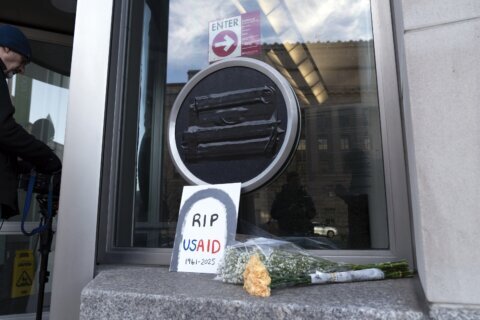The decision to forgo a traditional apartment or house and live in a tiny house is a big one, requiring dramatic changes in lifestyle that could mean a significant decrease in your cost of living. However, tiny houses aren’t always cheap, and building or buying a tiny home may cost more than you would expect.
[Read: 6 Great Tiny House Communities.]
The average cost of a tiny home is $52,000, according to an August 2021 study by Porch.com, which was released around the time the real estate market turned red hot and home prices skyrocketed.
That’s $336,000 less than the national median home price, according to the U.S. News Housing Market Index, which reports the national median price of a single family house landing at $388,000.
What qualifies as a tiny home varies widely, though, as tiny houses can include everything from a partially completed truck-trailer conversion to a professionally designed tiny home built on a foundation.
Luxury mobile tiny homes can reach more than $100,000, while some individuals manage to spend less than $10,000 building an off-the-grid tiny house that stays in one place. If you’re looking to buy land that you keep your tiny house on permanently, factor in that cost separately and consider additional costs like access to utilities, including water, gas and electricity.
A tiny house will continue to need maintenance and the occasional repair, just like a traditional house or even a car, so don’t forget to factor in those costs.
[Read: How Do I Find My Property Lines?]
Here’s what you can expect to pay for your tiny house, whether you’re building it, buying it or maintaining it.
Location Matters for Tiny Home Prices
According to Porch.com, these states are the cheapest and most expensive places to buy a tiny home in the U.S. Prices are averages.
Least Expensive Places to Buy a Tiny Home
— North Dakota ($28,000)
— Arkansas ($31,700)
— Kansas ($33,500)
— Mississippi ($34,500)
— New Hampshire ($35,200)
— Kentucky ($35,300)
— Missouri ($35,700)
— West Virginia ($36,200)
— Nebraska ($37,700)
— New Jersey ($39,700)
Most Expensive Places to Buy a Tiny Home
— Hawaii ($149,100)
— Montana ($78,400)
— California ($75,600)
— Connecticut ($74,900)
— New Mexico ($71,000)
— Nevada ($64,800)
— Washington ($58,800)
— South Carolina ($58,200)
— Minnesota ($56,200)
— Oregon ($55,800)
The Varying Cost to Build or Buy a Tiny House
The choice to buy a new, professionally built tiny house, a used tiny house or the materials to build one yourself will have the biggest impact on your wallet. New, professionally designed and built tiny houses can cost anywhere from $45,000 to $150,000 or more, depending on size and amenities.
You may be able to save on a professionally built tiny house by purchasing it used from an owner. But like buying a used car, consider the potential for deferred maintenance and customizations that may not appeal to you.
You’ll be able to cut out the cost of labor if you build the tiny house yourself. “As a general rule of thumb, when you see a house that’s $80,000, $100,000 (or) $120,000 by a builder, you can say that roughly 50% of that is going to be a labor component, and the other 50% is materials,” says Chris Schapdick, owner of Tiny Industrial, a tiny house building company based in New Jersey, and author of the upcoming book, “Building Your Tiny House Dream: Create and Build a Tiny House With Your Own Hands.”
[READ: When Will the Housing Market Crash?]
Where You Want to Spend More on a Tiny House
Whether you’re building your tiny home or hiring a professional, there are a few details you’ll want to pay particular attention to prior to construction to ensure that the structure will be safe and secure.
If you plan to make your tiny house mobile, the trailer that the home is built on is the most important factor. “The foundation of any building is always critical,” says Dan Dobrowolski, founder and CEO of Escape, a tiny home builder based in Rice Lake, Wisconsin. You want a trailer that’s designed to carry a structure like the one that will be built on it — old, rusted trailers will just lead to problems down the road.
The exterior structure must also be well built, like any house, but with the added obstacle that it must be able to withstand traveling at fast speeds if you’re building your home to be mobile. “Make sure the outer walls, the construction, is built tough,” Dobrowolski says.
Some materials might not be right for your project. For example, “a shingle roof is not good for a tiny house because it doesn’t hold up on the highway,” Schapdick says, adding that a thick metal roof will ensure it will be durable for travel.
Inside your tiny house, the kitchen and bathroom are often the costliest areas, just like in a traditional house, Dobrowolski says.
You can opt for smaller versions of appliances and fixtures, but the plumbing and electrical work will cost roughly the same as in a traditional house. If you’re building your tiny house yourself and don’t feel confident about doing this kind of specialized work, you may be better off hiring professionals for the plumbing and electrical work. Licensed electricians and plumbers typically charge between $45 and $200 per hour, depending on the company and where you live, according to HomeAdvisor.
[READ:22 Sustainable Building Materials to Consider for Your Home]
Where You May Save on a Tiny House
There are still areas you can save on your tiny house. If you don’t need your tiny house to be built by a certain deadline, Schapdick says you can save on the cost of materials by shopping around. Instead of buying lumber from Home Depot or a local hardware store, a DIY builder looking to save could keep an eye out for lumber listed for sale or for free on Craigslist, or even ask a site manager on a nearby construction project if there’s any surplus wood.
You can also furnish your tiny house with thrifted furniture and items you already own to help offset the added costs of a better-equipped trailer, for example.
Design decisions can also help you save money after the space is complete and ready to live in. Dobrowolski recommends using 12-volt power for the lighting and fixtures, as opposed to the 120 volts that are standard in most traditional home outlets. This saves on power use, makes plugging into power at a campsite or RV park easier and cuts down on utility bills if you live permanently in one spot.
“You can run almost the whole building on a battery you would use in a flashlight,” Dobrowolski says.
[Read: The Do’s and Don’ts of Buying Vacant Land]
The Cost to Maintain a Tiny House
When a tiny house is built correctly, necessary maintenance shouldn’t break the bank. “Ongoing maintenance is no different than your house, other than it’s a smaller package,” Dobrowolski says.
Have your heating and cooling system serviced annually like you would with an HVAC system in a traditional house to avoid major problems on the hottest and coldest days of the year. Keep an eye out for areas around windows and doors where you may find air leakage to avoid higher energy use, and follow regular maintenance guidelines for appliances like your water heater, stove and plumbing.
If you’re building your tiny house yourself, Schapdick notes that you may find you’re better set up to maintain and repair the home over months and years of use because you developed the skills during the building process. “You have very intimate knowledge of where everything is, and you have a better grasp of how everything works because you had a part in putting it together,” he says.
More from U.S. News
How to Measure the Square Footage of a House
How to Buy a House: A Step-by-Step Guide
The Guide for Buying Land, Building a House or Buying New Construction
How Much Does It Cost to Build a Tiny Home and Maintain It? originally appeared on usnews.com
Update 02/28/23: This story was previously published at an earlier date and has been updated with new information.













